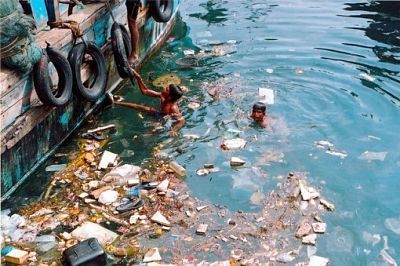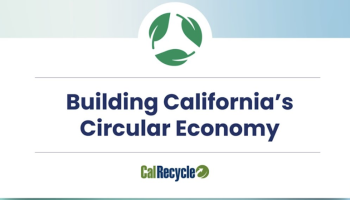San Diego’s water contamination is a hot topic. The area has several types of urban runoff, water pollution, and wildfire debris that might impact water quality.
Water contamination is not exclusive to California. According the NRDC, 80% of the world’s wastewater is thrown untreated into rivers, lakes, and seas.
In addition to air pollution, contaminated rainwater runoff from motorways and oil spills pollutes waterways.
Water pollution is any contaminant that enters the supply of water through surface exposure to water in rivers and lakes. Water, as a universal solvent, is designed to absorb whatever chemicals or impurities it comes into touch with, including dangerous ones.
Water pollution occurs due to wastewater, agriculture, factory and fuel emissions, among other sources.
San Diego Water Contamination
Contamination can cause a variety of issues for the ecosystem and those who rely on it.
Pollution from wastewater (sewage, agricultural runoff, and fertilisers) can harm wildlife reproduction and cause ecosystem disruption. Swimming, bathing, drinking and cooking can expose people to pollutants that might cause reproductive problems, rashes, gastrointestinal problems, cancer and thyroid disorders.
Effects of Contaminated Water
Water issues have been increasingly in the news, as toxins like lead could be deadly. Because lead solder was commonly used in pipelines before its hazards were generally recognised, older homes are particularly vulnerable. It’s difficult to detect lead in water since it’s odourless, colourless, and tasteless.
Bacterial contamination in water, such as E. coli, cryptosporidium, and giardia, can be harmful. Contamination is much more probable if you use well water or water from neighbouring lakes or rivers.
These systems effectively remove chemical toxins like lead and microbiological contaminants like giardia from water.
If you’re worried about your home’s water quality, start drinking bottled water right away and arrange a water test. To learn more about how Culligan can help you with your water issues, schedule a free home water test now.
San Diego Toxic Water Solutions
- Plastics should be reused as much as feasible.
- Paint, chemical cleaners, fuel, and other dangerous compounds should be disposed of responsibly.
- Maintain automobiles to avoid dangerous chemical leaks such coolants, oil, and antifreeze.
- Aside from helping to reduce overall water pollution, there are numerous ways to ensure the water entering your home is safe:
- Plastics should be reused as much as feasible.
- Paint, chemical cleaners, fuel, and other dangerous compounds should be disposed of responsibly.
- Maintain automobiles to avoid dangerous chemical leaks such coolants, oil, and antifreeze.
- Aside from helping to reduce overall water pollution, there are numerous ways to ensure the water entering your home is safe:
You may wish to install a whole-home water filter if you reside in an area where contamination of water is widespread (you’ve had one or even more boil warnings, for example). These filtration devices are equipped just at point of entrance to the home, so all water used in the home is filtered and safe to drink.
Point-of-use water supply systems can also safeguard your house from water contaminants

It’s critical to know what toxins the water filters you’re considering can remove. Some filtering systems, for example, target specific contaminants like iron, mercury, or sulphur.
Chemical Byproducts: Chemicals from production can leak into water and build in fish as well as other shellfish. Depending on the chemical, consequences range from moderate stomach discomfort and upset to much more serious and long-lasting concerns like methyl mercury.
Pollution from wastewater (sewage, agricultural runoff, and fertilisers) can harm wildlife reproduction and cause ecosystem disruption. Swimming, bathing, drinking and cooking can expose people to pollutants that might cause reproductive problems, rashes, gastrointestinal problems, cancer and thyroid disorders.
Contaminated Water Aesthetic Issues
Odor is among the most apparent and reported home water issues. It’s difficult to turn on the tap or stomach a rotten egg, earthy, or other unpleasant smell. Bad-smelling water is usually due to dissolved sulphur in the water supply. While a tiny quantity of sulphur is safe and typical, high quantities are accountable for that distinct odour and can making drinking or using water in your house unpleasant.
If your water tastes fine but looks hazy or muddy, you may have too much sediment in your supply. Water with a reddish to brownish colour has more iron in it, and this can cause stains on sinks, faucets, and fixtures.
The correct water filter can enhance the flavor, smell, and general cleanliness of water by removing pollutants that cause the problem.
Hard Water Contamination
Hard water issues are widespread and difficult to deal with in arid regions where groundwater is more prone to be used. Carbonate, calcium, and iron are dissolved minerals that cause hard water. The issues aren’t so much with the liquid directly, but what it does to your home. Hard water clogs pipes, fixtures, and wears out large appliances.
White, chalky residue can sluggish processes and make everyone work overtime to compensate. Rough water is also hard on skin, clothing, and nails, and has a metallic taste, makes life at home much more uncomfortable.




